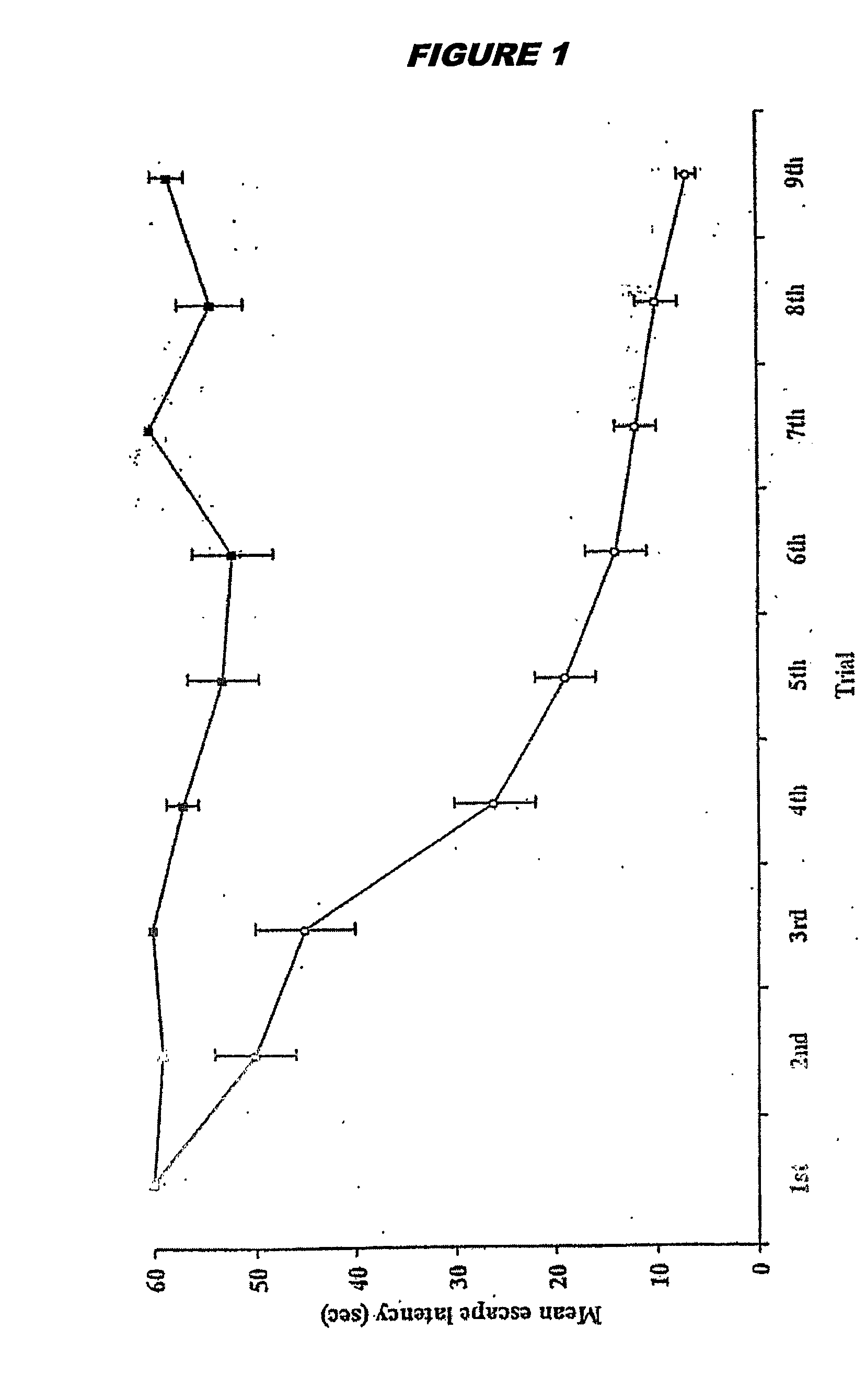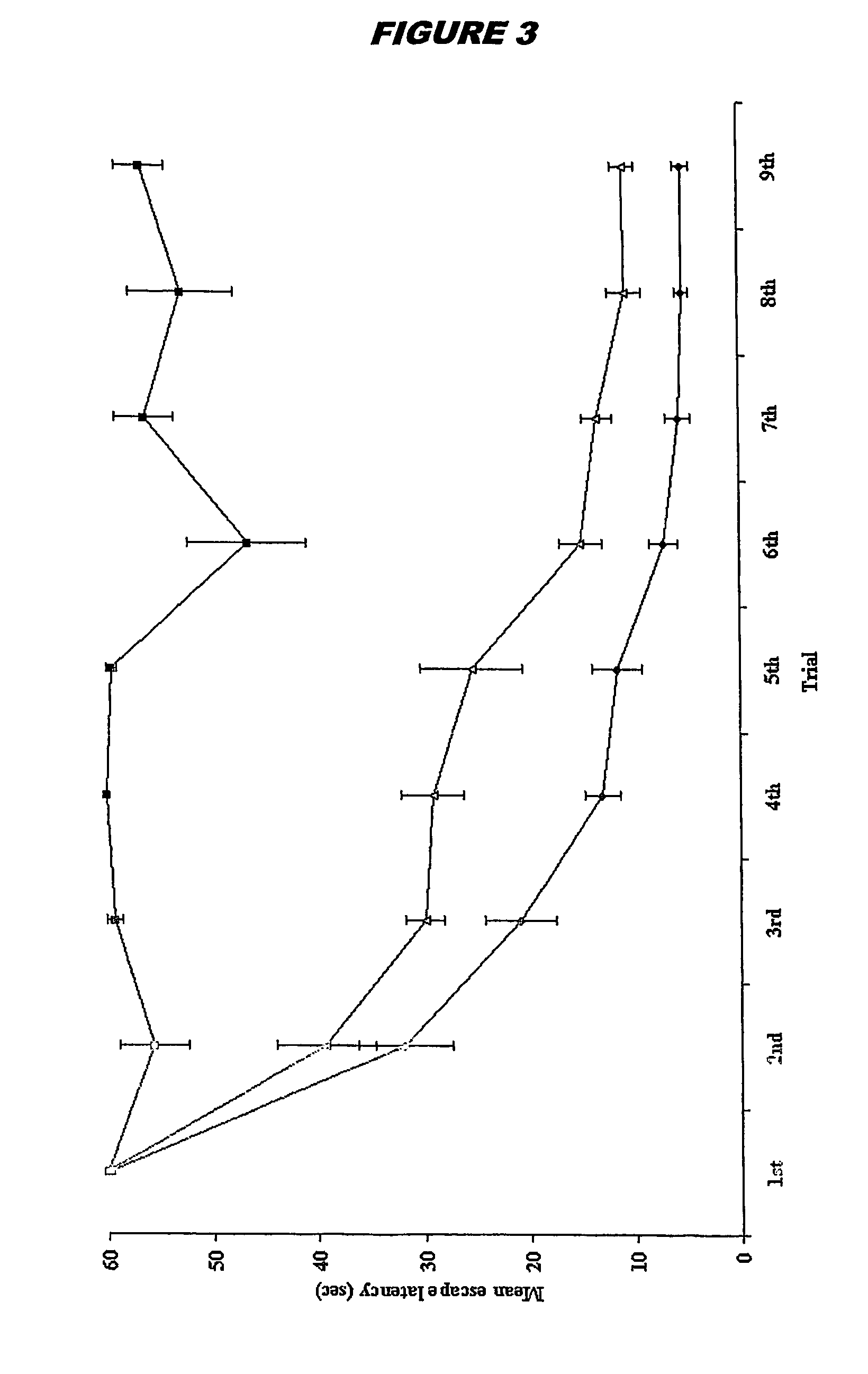Method of altering cell properties by administering rna
a cell and rna technology, applied in the field of cell properties alteration, can solve the problem of relativly limited number of specific differentiated cell types that can be produced using such methods, and achieve the effect of minimising or preventing and reducing the risk of rejection
- Summary
- Abstract
- Description
- Claims
- Application Information
AI Technical Summary
Benefits of technology
Problems solved by technology
Method used
Image
Examples
example 1
Production of Neural and Muscle Cells From Bone Marrow Stromal Stem Cells
Marrow Harvest and Culture.
[0200] Bone marrow stromal (mesenchymal) stem cells were obtained from adult Sprague Dawley rats. The technique is based upon the protocol of Owen and Friedenstein (1988), and represents a typical established adult stem cell source suitable for expansion in vitro. Briefly, after schedule one killing (cervical dislocation), tibia and femora were excised within 5 minutes of death. All connective and muscular tissue was removed from the bones and all further procedures were conducted under sterile conditions.
[0201] Marrow was expelled from the bones by flushing the bones with media (α-MEMS—Gibco Invitrogen Co. UK) containing 10% foetal calf serum, and 1% penicillin / streptomycin. Flushing was achieved by inserting a 25-guage needle attached to a 5 ml plastic barrel into the neck of the bone (cut at both distal and proximal end) and expelling 2 ml of media through the bone. The media a...
example 2
The Effects of Brain RNA Differentiated Stem Cells on Age Related Damage to the Rat Brain, Assessed by Spatial Learning and Memory Performance of Recipient Animals
[0208] Bone marrow mesenchymal stem cells were prepared in vitro as described above in Example 1. When the cells reached confluence, they were exposed to brain RNA (prepared as above) for 12 hours. Donor stem cells were derived from a pigmented rat strain (Lister Hooded). Donor RNA and recipient animals were provided from a different rat strain (Sprague Dawley).
[0209] Recipient Sprague Dawley rats were ex-breeder male rats aged between 468-506 days. It is well established that such animals of advanced age cannot learn to locate a hidden platform in a water maze (Stewart & Morris, 1993; Bagnall & Ray, 2000). Experimental animals received a 0.5 ml intra-venous injection of brain RNA treated stem cells, equating to the product of one six well plate of brain RNA treated cells. Control animals received an equivalent amount of...
example 3
In Vivo Stimulation of Resident Stem Cells Via Exogenous RNA Stimulated Differentiation, Migration and Integration
[0213] Given the powerful stimulatory effects of exogenous RNA on stem cells established in Examples 1 and 2, and the effects of these cells on repairing age related damage in a mammalian model, a further Example is given, establishing the effects of primary tissue derived RNA on host animal resident stem cells. To this end, neonate rats received an intraperitoneal injection of donor GFP-expressing crude bone marrow at age 1 day postnatal. Each animal received approximately 800,000 cells in a 0.2 ml injection. These foreign cells were readily integrated in host bone marrow and were observed to contribute to this biological environment. At age 90 days, GFP bone marrow grafted animals were randomly assigned to two groups.
[0214] Experimental animals received an injection of brain RNA, control animals received an injection of physiological saline. Experimental brain RNA wa...
PUM
| Property | Measurement | Unit |
|---|---|---|
| Electrical resistance | aaaaa | aaaaa |
| Stability | aaaaa | aaaaa |
Abstract
Description
Claims
Application Information
 Login to View More
Login to View More - R&D
- Intellectual Property
- Life Sciences
- Materials
- Tech Scout
- Unparalleled Data Quality
- Higher Quality Content
- 60% Fewer Hallucinations
Browse by: Latest US Patents, China's latest patents, Technical Efficacy Thesaurus, Application Domain, Technology Topic, Popular Technical Reports.
© 2025 PatSnap. All rights reserved.Legal|Privacy policy|Modern Slavery Act Transparency Statement|Sitemap|About US| Contact US: help@patsnap.com



